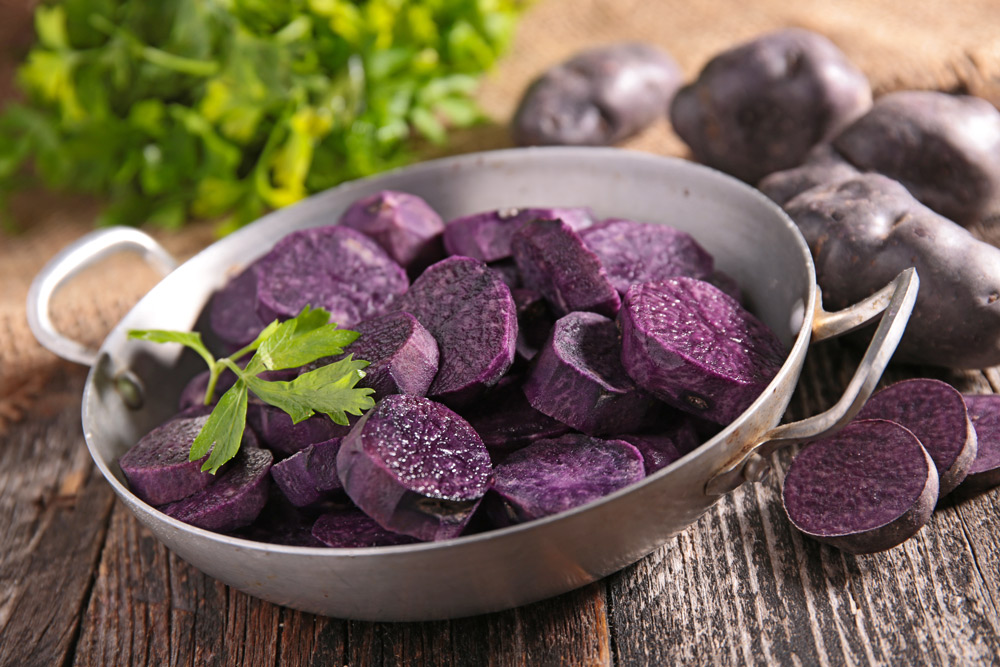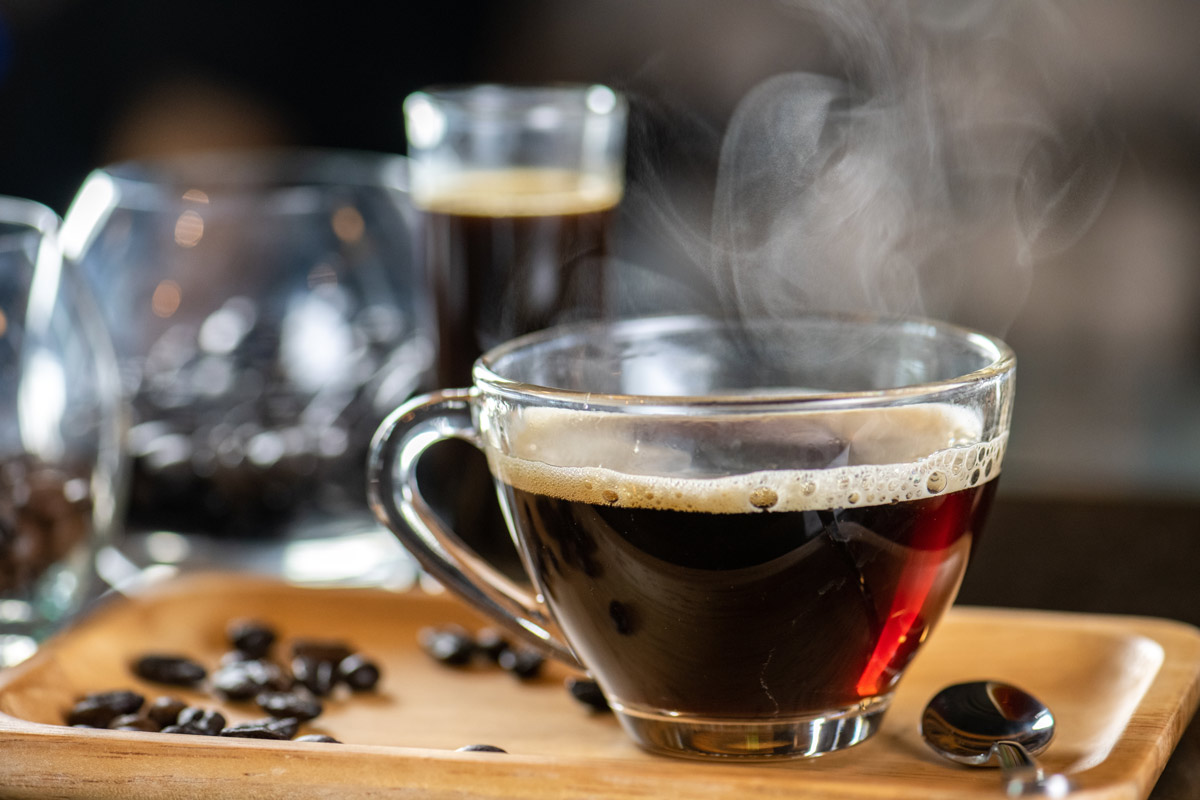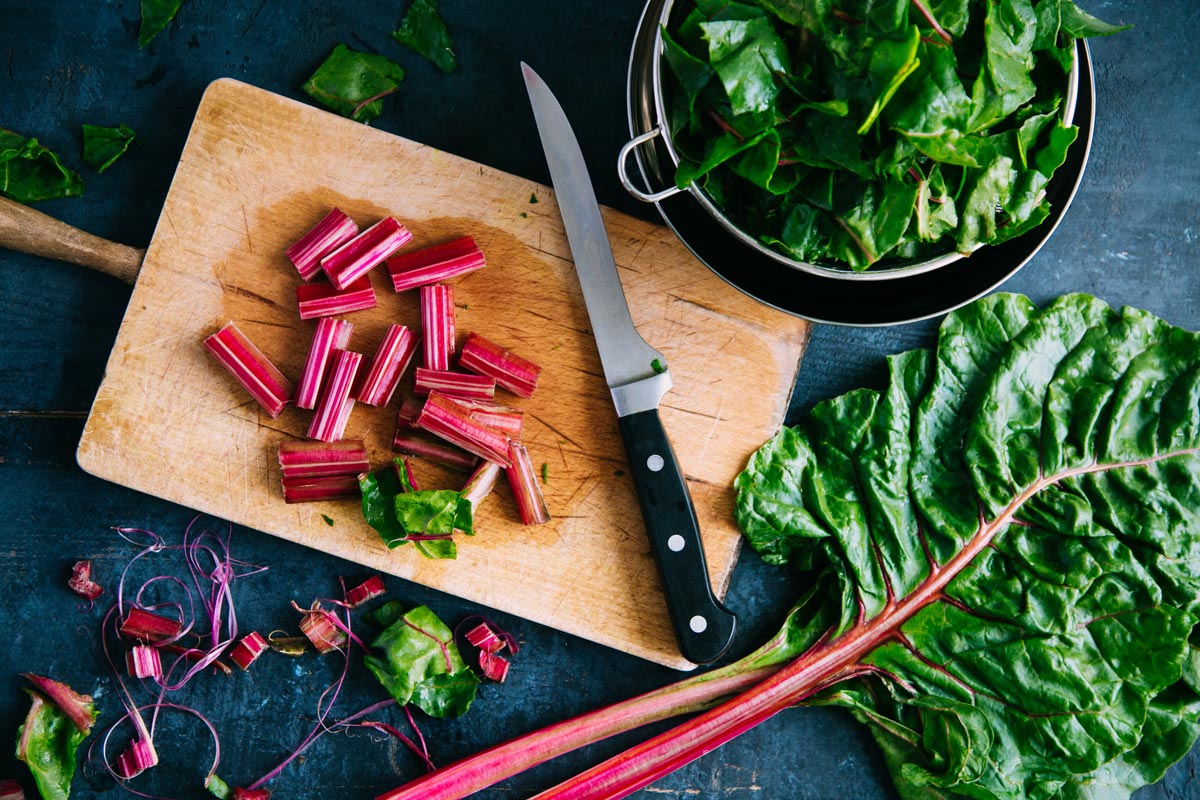Hot Honey Sweet Potatoes Recipe, Spotlight on Sweet Potatoes, Is Morning Joe the Healthiest and More Motivation to Get Moving
Already nostalgic for the winter holidays? Rekindle memories of those special meals with this sweet potato dish—simple to make and tastes like a true indulgence. If you like a cup after a meal, you’ll be intrigued by the latest study on the brew—not how much to drink is safe to drink but when to drink it. And if the cold weather threatens to turn you into a couch potato (the only truly unhealthy kind of spud), asking yourself two questions can help you get back on track.
Hot Honey Sweet Potatoes
 Hot Honey Sweet Potatoes
Hot Honey Sweet PotatoesThe “hot honey” trend is as popular as ever, and it’s definitely not limited to wings. This recipe revs up the flavor of nutrient-dense sweet potatoes. It’s perfect if you’re looking for a meatless Monday dish any day of the week—just add a salad to get in your greens.
Ingredients
- 2 large sweet potatoes (see Healthy Ingredient Spotlight in weekly newsletter)
- 3 tablespoons extra virgin olive oil, divided use, plus more for drizzling
- 4 ounces pecans
- 3 tablespoons honey
- 1/4 teaspoon cayenne pepper
- 3 ounces mascarpone cheese
Directions
Step 1
Heat your oven to 425°F. Scrub then thoroughly dry the sweet potatoes and pierce them in about a half-dozen places with the tip of a sharp paring knife. Place them on a rimmed sheet pan lined with parchment paper and rub with about 1 tablespoon of olive oil. Roast until tender, about an hour; the tip of a knife should easily slide through to the centers. Remove from the oven and let cool slightly.
Step 2
Meanwhile, heat a small frying pan. When hot, add the pecans and dry roast them, shaking the pan often for about 2 minutes or until the nuts become fragrant. Add the remaining 2 tablespoons of olive oil, the honey, and cayenne, and toss well. Remove from the heat.
Step 3
Peel the potatoes and cut them into even rounds, about 1/2-inch thick. Place them on a serving platter and top with the pecan mixture. Place a small dollop of mascarpone over each slice and drizzle with olive oil.
Yields 4 servings

Healthy Ingredient Spotlight
Sweet Potatoes or Yams?
No matter what they’re called in supermarkets, the orange tubers you see are sweet potatoes. True yams, cultivated mostly in Africa, Asia, South America, and the Caribbean, are quite different and pretty hard to find in the US unless you’re shopping at specialty markets with produce from those regions. With a very thick skin and primarily white flesh, yams have a less pronounced flavor than sweet potatoes, though that will differ by origin.
If you want to branch out from run-of-the-mill sweet potatoes, you might want to try white and purple sweet potatoes, although they don’t have as much beta-carotene as traditional orange varieties like Jewel, Garnet, and Beauregard, each with subtle differences in taste.


Quick Kitchen Nugget
For Even Roasting
Thinner sweet potatoes will take less time to roast than large round ones, but the most important consideration when buying them is that they’re all roughly the same size for a given meal. This way, they’ll all cook in the same amount of time and you won’t risk burning smaller ones while waiting for the others to finish.

For Your Best Health
Is Morning Joe the Healthiest?

There’s no shortage of research on the benefits of coffee, with most studies trying to find the right number of daily cups to help lower the risk for chronic conditions like heart disease, dementia, and diabetes and lead to better overall health. A recent study from researchers at Tulane, Harvard, and The George Washington University looked at whether when you drink coffee makes a difference. They found that, for health benefits, drinking coffee only in the morning might be the best option.
This observational study included 40,725 adults from the National Health and Nutrition Examination Survey 1999–2018 who had provided dietary data and 1,463 adults from the Women’s and Men’s Lifestyle Validation Study who had completed a 7-day dietary record. After more than 9 years of follow-up that looked at all-cause mortality as well as deaths specifically from heart disease and cancer, the researchers concluded that people who drank one or two cups of coffee limited to the morning hours—within the time frame of 4 am to noon—had a 16% lower risk of premature death from any cause and a 31% lower risk of dying from cardiovascular disease. People who drank coffee all day did not have a reduction in risk.

Fitness Flash
More Motivation to Get Moving
University of Iowa researchers are recommending that people be surveyed about their physical activity levels at health visits, after their new study underscored the link between physical activity and chronic disease. The researchers, led by Lucas Carr, PhD, associate professor in the Department of Health and Human Physiology, examined responses from more than 7,000 patients at University of Iowa Health Care Medical Center who noted their level of physical activity in a questionnaire called The Exercise Vital Sign Survey. It asked just two questions: On average, how many days per week do you engage in moderate to vigorous exercise (like a brisk walk), and on average, how many minutes do you engage in exercise at this level?
“This two-question survey typically takes fewer than 30 seconds for a patient to complete, so it doesn’t interfere with their visit. But it can tell us a whole lot about that patient’s overall health,” Dr. Carr said.
From patients’ answers to the questionnaire, the researchers found that those who reported the highest level of physical activity—meaning they exercised moderately to vigorously at least 150 minutes per week—were at statistically significant lower risk of having 19 chronic conditions, including cardiovascular disease, cancer, respiratory disease, and diabetes. The findings further suggested patients who are least active—meaning they reported little to no exercise in a given week—are at increased risk of developing a chronic disease.
While the link between physical activity and reduced risk of chronic disease is not a new finding, the researchers say the study underscores the value of surveying patients about their physical activity levels.
“We believe this finding is a result of those patients who take the time to come in for annual wellness exams [being those who] also are taking more time to engage in healthy behaviors, such as being physically active,” Dr. Carr said.
Get More Recipes In Your Inbox!


